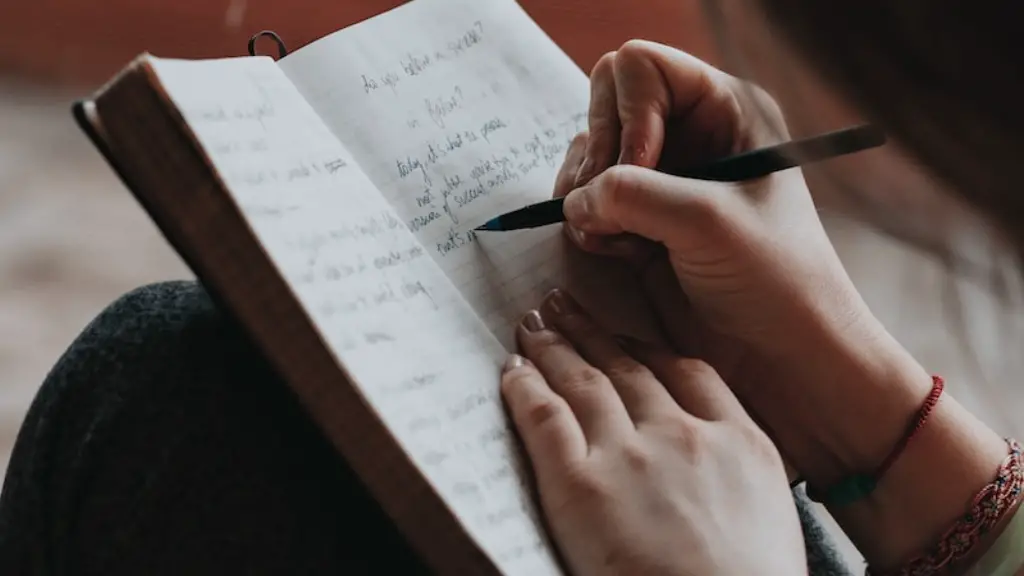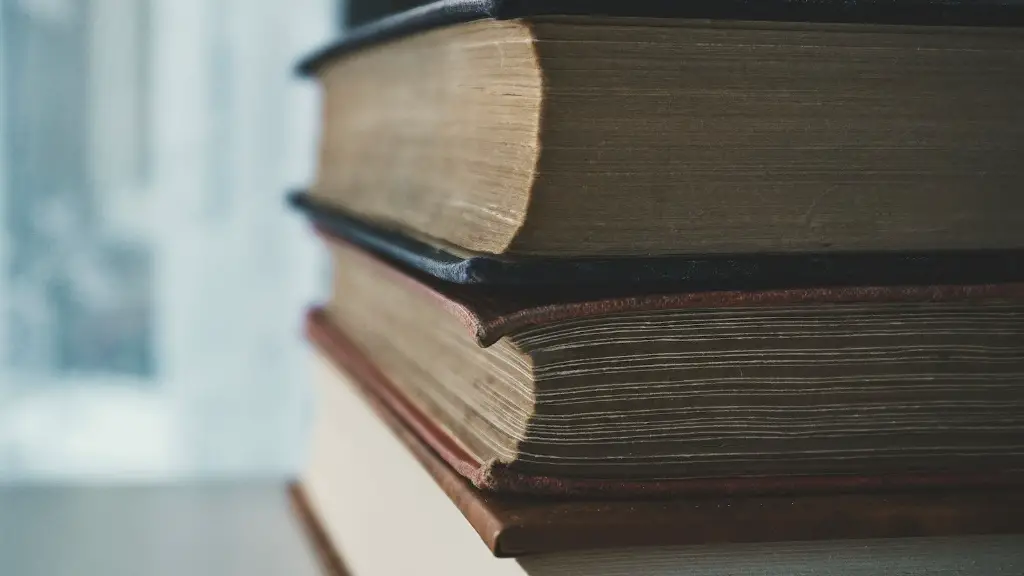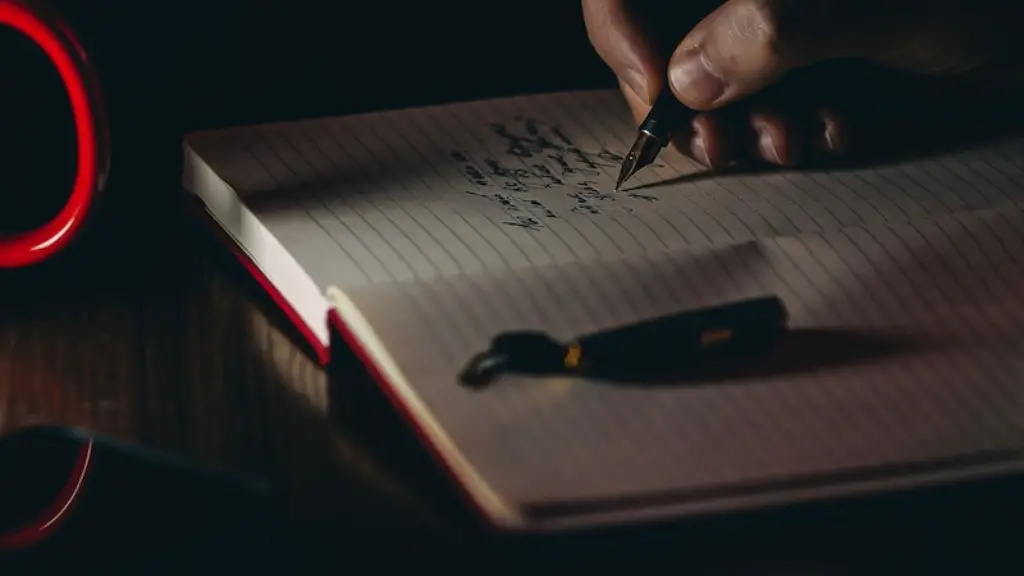Poetry has long been used as an outlet for emotion, from angst-filled teenagers scribbling summer sonnets to adults pouring their hearts into haiku. Poetry has remained relevant for millennia, but what is it actually used for? What purpose does it serve?
The poetic experience can be interpreted in multiple ways. On a surface level, poetry can be interpreted as an expression of human experience. Poetry can be used to articulate emotions, ranging from joy to sorrow; love to hate; beauty to horror. It is an opportunity to explore our sentimental reactions to the world around us, recording them in a way that feels safe and comfortable.
Poetry is also capable of expressing abstract concepts such as identity, belonging and mortality. Studies show that poetry can play an important role in self-expression, and can help individuals embody aspects of themselves that they may not have access to in other forms of communication. Poetry can also act as a platform for education. It can be used to educate individuals about the complexities of life, sociopolitical issues and the beauty of language itself.
Poetry is often used to provide a way for people to connect to their innermost feelings and thoughts—regardless of language or culture. Through the power of words, it allows people to communicate deeply held ideas and emotions that may otherwise be inaccessible or hard to verbalize. It can be a source of comfort and understanding for those who are struggling to find an outlet.
From an historical perspective, poetry has been used to capture moments in time and commemorate history, allowing us to pay homage to ancestors who lived before us and the things they experienced. It can also shed light on the shared experiences of humanity, shining a light on our collective story that might otherwise go unnoticed.
This is not to say that all poetry serves a profound purpose – some poetry is purely recreational and light-hearted. Everything from nursery rhymes to limericks can provide entertainment and light relief from everyday life. This is not to discount their ability to be moving, powerful or thought-provoking either – oftentimes the most compelling works of art derive from seemingly mundane topics.
The Power of Imagery
A huge part of poetry’s appeal is its ability to draw vivid imagery of the natural world and its use of metaphor, rhyme, and alliteration. This power helps immerse readers in the author’s world, allowing them to experience the same emotions, sights and sounds as the author while they read the poem. This can give individuals an emotional outlet that traditional language lacks, allowing them to better communicate inner feelings and emotions in a concise way.
Moreover, modern poetry can be used to explore topics such as climate change, social justice and equality – topics that would otherwise be hard to explain without the use of metaphors and imagery. This helps flesh out the subject matter in a way that is more accessible to readers, fostering empathy and understanding of the issues being discussed.
In addition to this, poetry allows readers to explore their own personal truths and learn about the human experience. By drawing on the emotional power of words, it provides readers with an outlet to explore and express their innermost thoughts in a way that can be both comforting and illuminating. This allows readers to make peace with what they are feeling and gain closure on difficult topics.
The Rise of Visual Poetry
It would be remiss to discuss the power of poetry without mentioning the rise of ‘visual poetry’ – poetry that strays away from the norms of traditional written poetry. This type of poetry relies on the power of imagery and visuals to convey a message, and can be found in places such as murals, photographs, and films.
Modern visual poetry challenges the preconceptions of what poetry is and can be, offering audiences a way to explore the same topics through a different medium. This type of art has the ability to underscore and reinforce the message in ways that words alone can’t.
Visual poetry can also bridge language barriers, as it does not rely on verbal language to convey meaning. This gives a voice to those who may not have access to traditional means of communication.
Furthermore, visual poetry can be used to express personal identity in a unique way. By connecting imagery with language, audience members can express their individual truths and make sense of their personal journeys.
The Role of Technology
Technology has played a major role in the evolution of poetry. As the internet has developed, so too has the popularity of digital and interactive poetry.
Technology has enabled the creation of lively and engaging poetry platforms. Cloud-based systems such as Twitter and Instagram have allowed for the sharing of user-generated content and provided new poetic voices with a platform to be heard.
The past decade has seen the rise of interactive, multimedia poetry platforms. This has given writers the opportunity to experiment and explore new forms of expression, creating digital poems that combine graphics, sound, and video.
The internet has also opened up the playing field when it comes to writing resources. From thesauruses to rhyming dictionaries, writers can now access an abundance of tools to craft their perfect poem. The internet has even created a new beast – online poem generators, which can create original poems with the press of a button.
The Future of Poetry
One thing is certain – the power of poetry is here to stay. New generations are finding new ways to express themselves, and technology has given rise to new forms of expression. As traditional and modern forms of poetry continue to evolve, their relevance and power to move audiences worldwide will persist.
The internet is also likely to continue to act as a major platform for poetry. Social media platforms, blogs, and peer-writing websites are all likely to become integral parts of the modern poet’s toolkit, providing both a platform for expression and a channel for connection and collaboration.
Poetry will continue to break down language barriers and provide an important platform for a multitude of voices. By connecting people all over the world, poetry will offer comfort and understanding, in the face of an increasingly diverse and multifaceted world.
The Healing Power of Poetry
The healing power of poetry should not be underestimated. Poetry can provide comfort and reassurance to those struggling with adversity, while allowing them to process and express intense feelings. It is a powerful tool to cope with traumatic experiences, as well as promote creativity and a feeling of being ‘heard’.
Studies have shown that poetry can reduce stress and anxiety, improve mood and provide coping mechanisms for those struggling with mental health issues. It has even been used in therapy as a form of cognitive behavioural therapy, and can provide a safe space for individuals to confront their fears and worries.
Moreover, the use of poetry in schools and universities has, time and time again, been proven beneficial for students. Poems are an excellent way to expose students to new and exciting ideas, as well as foster creativity and critical thinking. As such, it is an invaluable tool for children of all ages and abilities.
The Legacy of Poetry
It is clear that poetry is an essential and deeply powerful part of our human experience. Poetry has the power to educate, entertain, and illuminate. By connecting us to each other and to ourselves, it allows us to experience the same feelings, same struggles and same joys.
By understanding the purpose of poetry, we can more fully appreciate its power, and how it has shaped our lives and the lives of generations before us.





